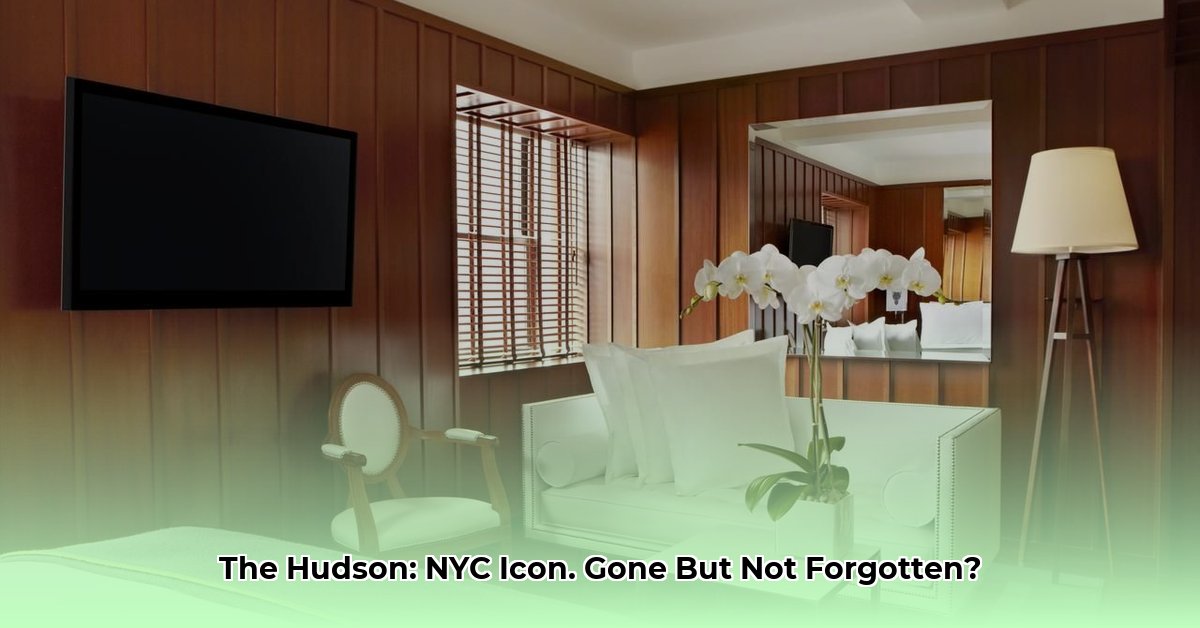The revolving doors of the Hudson Hotel have stopped spinning, but its story, much like the city itself, keeps turning. This isn’t just the tale of a closed hotel; it’s a slice of New York history, echoing the city’s ever-evolving spirit, from the Jazz Age to the pandemic era.
A Storied Past: From Women’s Haven to Hipster Hotspot
Long before its days as a trendy hotel, the building at 353 West 58th Street served a different purpose. In the 1920s, Anne Morgan, daughter of financier J.P. Morgan Jr., envisioned a sanctuary for working women navigating the bustling metropolis. The American Women’s Association (AWA) clubhouse, a thirteen-story marvel completed in 1929, became that haven. It offered not just affordable rooms, but a vibrant community with a swimming pool, gymnasium, restaurants, and meeting spaces – a testament to Morgan’s progressive vision.
Fast forward to 1999. Ian Schrager, the Studio 54 impresario, saw potential in the historic structure. Partnering with Philippe Starck, he reimagined the space as the Hudson Hotel, a minimalist-chic haven that redefined cool. The Sky Terrace, a rooftop oasis with breathtaking city views, became the place to see and be seen.
Starck’s Vision: A Design Dialogue with History
Starck’s playful yet sophisticated touch was evident throughout. The cavernous lobby, a blend of old-world charm and modern sensibilities, became an experience in itself. His design sparked a dialogue between the building’s past and its present, a fusion of historical significance and contemporary aesthetic.
The Hudson Experience: Compact Chic and City Buzz
The rooms, admittedly compact, exuded style. Prada-esque furniture, MALIN+GOETZ toiletries, flat-screen TVs, and iPod docks (a novelty at the time) maximized style within limited space. After all, who needed sprawling quarters when you had the energy of New York City right outside your door? Central Park was a short stroll away, and the Time Warner Center beckoned with its upscale offerings.
Hudson Common: The Heartbeat of the Hotel
Hudson Common, more than just a hotel restaurant, became a destination. Its menu, featuring gourmet burgers, classic colonial dishes with a twist, and a lively bar scene, drew a diverse crowd. The outdoor patio offered respite from the city’s hustle, while the Library Bar provided a more intimate setting.
The Pandemic’s Shadow and a Farewell (For Now)
The COVID-19 pandemic, a crisis that shook the hospitality industry, proved too much for the Hudson. In 2020, its doors closed, marking the end of an era. The building, however, lives on, converted into apartments, offering a new chapter in its storied existence.
Anne Morgan’s Legacy: Empowering Women in a Changing World
Anne Morgan’s vision extended beyond just providing housing. The AWA clubhouse was designed to empower women, offering resources and a supportive network. Its closure during the Great Depression marked a significant loss, but its legacy of female empowerment continues to inspire.
The Evolution of an Icon: Adapting to the Times
The building at 353 West 58th Street has seen remarkable transformations. From a women’s clubhouse to a hotel, and now apartments, it has adapted to the changing needs of the city. Its history reflects broader societal shifts, from the rise of women in the workforce to the challenges of the pandemic era.
The Hudson’s Heyday: A Boutique Hotel Redefined
The Hudson Hotel, with its prime location, stylish design, and accessible price point, captured a unique niche in the city’s hospitality landscape. It offered a taste of Manhattan glamour without the exorbitant price tag, attracting a diverse clientele. While its compact rooms might have been a talking point, they were part of its unique charm, a testament to efficient design and urban practicality.
The Future of an Icon: What Lies Ahead?
The Hudson’s conversion to apartments raises questions about the future of affordable yet stylish accommodations in Midtown. While the hotel itself is gone, its legacy remains, prompting reflection on the evolving needs of the city and the role of iconic buildings in shaping its identity.
What are your memories of the Hudson? Share your thoughts and stories in the comments below.
- How Did Charles F. Brush Discover Wind Energy Tech? - November 19, 2025
- Wind Energy Vertical: Weighing the Pros and Cons of Wind Power - November 16, 2025
- How Much Energy Does a Wind Turbine Actually Create? - November 14, 2025
















